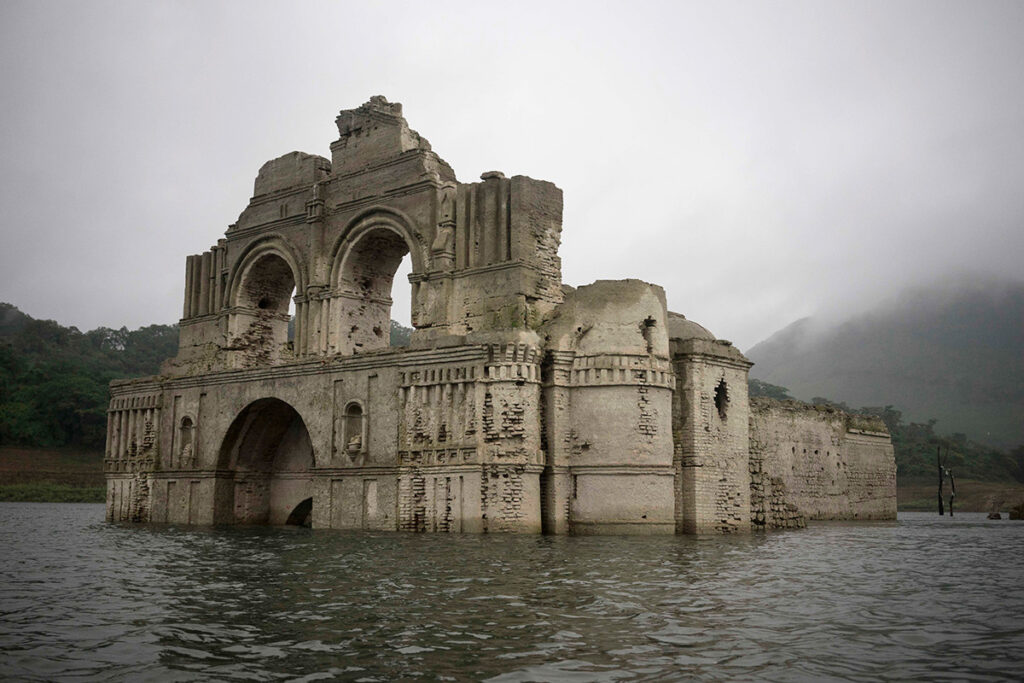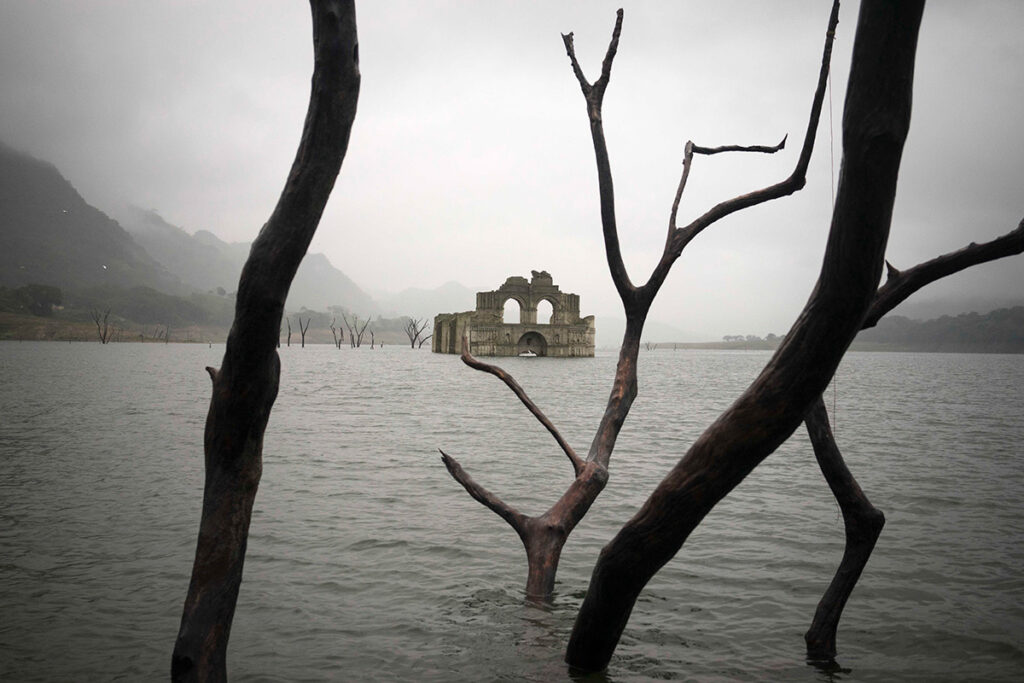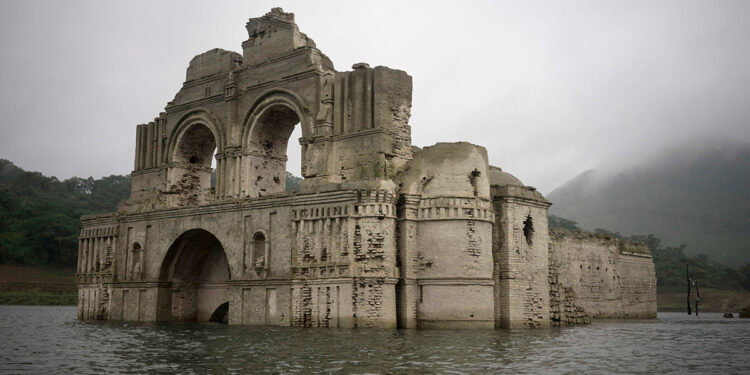Droughts cause water levels to drop, which is not a good thing. Droughts in southern Mexico, on the other hand, have exposed an intriguing secret: The Temple of Santiago is an ancient temple that dates back 400 years. Tourists and residents can now visit the mid-16th-century colonial church due to receding water levels in the Nezahualcoyotl reservoir.

Water levels at the Nezahualcoyotl reservoir decreased by up to 25 meters, exposing a mid-16th-century colonial church known as the Temple of Santiago.
This historic house was created 400 years ago by Dominican friars—Bartolome de las Casas—but was eventually abandoned owing to diseases in the area in the 1770s.
According to Carlos Navarrete, an architect who worked on a Mexican government investigation on the chapel.

During the smallpox pandemic of 1773–1776, the church was abandoned, according to Navarrete.
He wrote about the report’s release date:
“At the time, the wood from the chorus loft and the roof beams were still visible. There is also a vast ossuary of plague victims who depopulated the area.”
The church was never used for ecclesiastical purposes after it was abandoned.
It’s worth noting that this isn’t the first time the temple has risen from the sea. Strangely, droughts in the area were severe enough in 2002 that people were able to walk inside the chapel.























